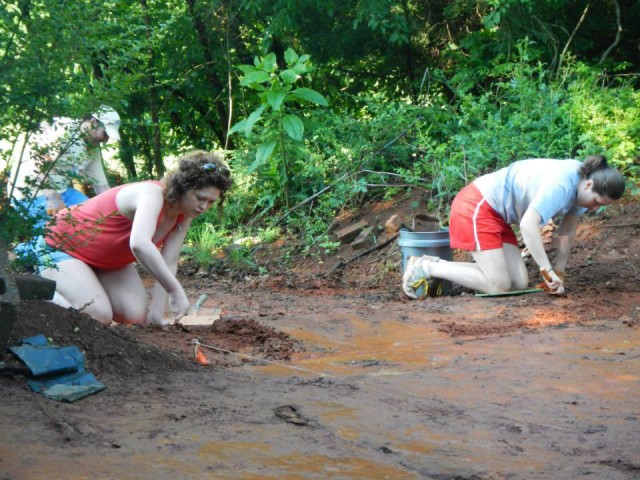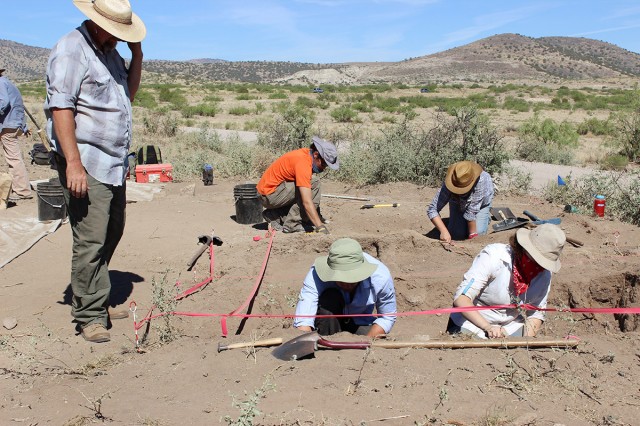- Home
- >
- Preservation Archaeology Blog
- >
- Archaeology in the Southwestern and Eastern United...
Alex Covert, Preservation Archaeology Field School Student
I participated in a field school in Virginia last summer, and that experience was quite different from the one I’m having in New Mexico this summer. Through these two experiences, I have realized that archaeology varies greatly depending on where one is working.
In Virginia, the program took place at Thomas Jefferson’s Poplar Forest. We worked at uncovering the vegetable garden and pre-colonial slave quarters. The weather was hot, humid, and muggy. The soil was claylike (firm and compact) and red in color. It was very difficult to screen, because it would form into small balls of clay and we had to push it through the screens with the bottoms of our trowels. When excavating, we never used shovels. We used only trowels, excavating layer by layer until we found a change in soil color or texture or a surface. The surfaces we were looking for were cobble or brick. We used only quarter-inch screens on this project. The artifacts we found were primarily glazed ceramic sherds, such as porcelain or pearlware, glass shards, and iron nails.

Working at the Dinwiddie site is quite different. Here, we are looking for ancient architecture and trash dating from about 1300 to 1450. The weather here is very hot—we are lucky if we get a slight breeze in the afternoon. The soil tends to be sandy loam (soft and silty), and it is tan to brown in color. The artifacts we are finding are fired clay pottery sherds, lithics (stone tools and the waste flakes from making the tools), and animal bones. We use shovels, trowels, patiches (a sort of small, hand-held pick), and pickaxes to excavate. We use larger tools here because we don’t normally expect thin stratigraphic layers in the fill of these rooms. We also use larger tools to save time, because we typically have to dig farther down in our units to reach culturally sterile deposits than we did in units in colonial sites. In addition to quarter-inch screens, we also use window screens to reveal small artifacts.

I’d say that it is valuable to participate in more than one field school in different parts of the world, and I am happy that I have been able to do so. Comparing and contrasting the much different periods and environments make discovering information about the past even more interesting to me. It was difficult to stop looking for the glass shards and glazed ceramics that really stood out when screening, and instead train my eyes to see the lithics and pottery that tend to blend in with rocks in the screen—I certainly have gained a better eye for detail. The different techniques used have helped me gain more knowledge about variability in archaeological methods. I feel that I am seeing a more holistic picture of archaeology.
One thought on “Archaeology in the Southwestern and Eastern United States”
Comments are closed.
Explore the News
-
Join Today
Keep up with the latest discoveries in southwestern archaeology. Join today, and receive Archaeology Southwest Magazine, among other member benefits.
Really interesting comparisons Alex. So which one interests you more? Or do you just want to continue to sample different sites?